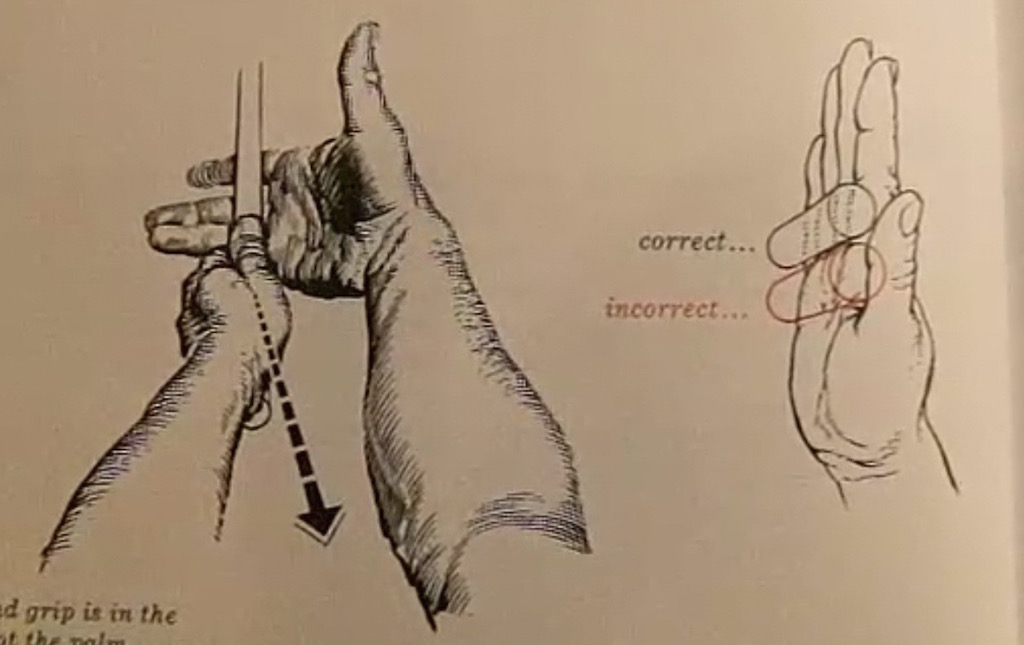Instruction
Kelley: Three ways to manage first-tee stress

1. Let your thoughts come and go
Positive thinking doesn’t always work. Ever tried to just think positive expecting everything to go as planned only to be let down when it doesn’t? Afterwards, you are left even more frustrated. Although a positive outlook is better than a negative mindset, only preparing for positive outcomes is unrealistic.
Rarely things go perfectly as planned. Golf can be chaotic at times. Research shows mentally rehearsing for both a poor outcome and a good outcome will be more beneficial. This will put your mind at ease and help you develop the tools to rebound from a not so great start. The night before, plan a reaction to how you will grind from a poor start to the round. If a negative thought pops into your mind, let it pass.
2. Actually practice being present
Everyone has heard to be “present” during stressful situations.” However, this needs to be practiced, and the concept needs to be understood. Being present entails being mindful of something in the current moment. Not just a void mind. This can be as simple as focusing on your breathing or focusing on feeling the club swing when you are on the tee box waiting your turn.
A common one I found beneficial is to simply focus on the hole ahead of you. Ask yourself the question, “What does a good shot look like here from this tee box? You can think about how the course architect designed the hole. Figure out how the hole should be properly played from the architect’s view. Even a moment of gratitude for having your health to play golf that day will work wonders.
The beauty of this is it can actually be practiced away from the golf course. Next time you are outside, see how long you can go for a walk staying present in the moment. Practice noticing the buildings around you, then when your mind drifts, gradually bring it back.
3. Understand the concept of attention
This is the holy grail. Where you place your attention during the actual golf swing can play a major factor in the outcome of the shot. “Attention” is simply what you are mindful of during the actual motion. This is massively different then a “swing thought”. There are multiple places where a player can place their attention and it is best discovered through trial and error.
A few examples of where attention can be placed is on the start line of the shot, feeling the pressure move in your feet or simply being aware of your body throughout the motion. Usually, the best places to place your attention is somewhere you can keep it throughout the swing. This helps the player stay committed to the shot. If you have an awareness you know can maintain during the entirety of the motion, you will swing more freely with confidence.
(Kelvin now offers online lessons and consultations through his website)
- LIKE18
- LEGIT6
- WOW0
- LOL1
- IDHT0
- FLOP0
- OB0
- SHANK0
Instruction
Clement: Weak grips are injuries in the making for many golfers

Like Jordan Spieth, trying to go to a bowed wrist at the top or in the downswing to square the club is placing you in a dangerous position for your lead wrist; you are one tree root or deep rough situation away from a nasty injury that could easily require surgery. Don’t let this be you.
- LIKE0
- LEGIT0
- WOW0
- LOL0
- IDHT0
- FLOP2
- OB0
- SHANK3
Instruction
Clement: Laid-off or perfect fade? Across-the-line or perfect draw?

Some call the image on the left laid off, but if you are hitting a fade, this could be a perfect backswing for it! Same for across the line for a draw! Stop racking your brain with perceived mistakes and simply match backswing to shot shape!
- LIKE1
- LEGIT0
- WOW0
- LOL0
- IDHT0
- FLOP0
- OB0
- SHANK1
Instruction
The Wedge Guy: The easiest-to-learn golf basic

My golf learning began with this simple fact – if you don’t have a fundamentally sound hold on the golf club, it is practically impossible for your body to execute a fundamentally sound golf swing. I’m still a big believer that the golf swing is much easier to execute if you begin with the proper hold on the club.
As you might imagine, I come into contact with hundreds of golfers of all skill levels. And it is very rare to see a good player with a bad hold on the golf club. There are some exceptions, for sure, but they are very few and very far between, and they typically have beat so many balls with their poor grip that they’ve found a way to work around it.
The reality of biophysics is that the body moves only in certain ways – and the particulars of the way you hold the golf club can totally prevent a sound swing motion that allows the club to release properly through the impact zone. The wonderful thing is that anyone can learn how to put a fundamentally sound hold on the golf club, and you can practice it anywhere your hands are not otherwise engaged, like watching TV or just sitting and relaxing.
Whether you prefer an overlap, interlock or full-finger (not baseball!) grip on the club, the same fundamentals apply. Here are the major grip faults I see most often, in the order of the frequency:
Mis-aligned hands
By this I mean that the palms of the two hands are not parallel to each other. Too many golfers have a weak left hand and strong right, or vice versa. The easiest way to learn how to hold the club with your palms aligned properly is to grip a plain wooden ruler or yardstick. It forces the hands to align properly and shows you how that feels. If you grip and re-grip a yardstick several times, then grip a club, you’ll see that the learning curve is almost immediate.
The position of the grip in the upper/left hand
I also observe many golfers who have the butt of the grip too far into the heel pad of the upper hand (the left hand for right-handed players). It’s amazing how much easier it is to release the club through the ball if even 1/4-1/2″ of the butt is beyond the left heel pad. Try this yourself to see what I mean. Swing the club freely with just your left hand and notice the difference in its release from when you hold it at the end of the grip, versus gripping down even a half inch.
To help you really understand how this works, go to the range and hit shots with your five-iron gripped down a full inch to make the club the same length as your seven-iron. You will probably see an amazing shot shape difference, and likely not see as much distance loss as you would expect.
Too much lower (right) hand on the club
It seems like almost all golfers of 8-10 handicap or higher have the club too far into the palm of the lower hand, because that feels “good” if you are trying to control the path of the clubhead to the ball. But the golf swing is not an effort to hit at the ball – it is a swing of the club. The proper hold on the club has the grip underneath the pad at the base of the fingers. This will likely feel “weak” to you — like you cannot control the club like that. EXACTLY. You should not be trying to control the club with your lower/master hand.
Gripping too tightly
Nearly all golfers hold the club too tightly, which tenses up the forearms and prevents a proper release of the club through impact. In order for the club to move back and through properly, you must feel that the club is controlled by the last three fingers of the upper hand, and the middle two fingers of the lower hand. If you engage your thumbs and forefingers in “holding” the club, the result will almost always be a grip that is too tight. Try this for yourself. Hold the club in your upper hand only, and squeeze firmly with just the last three fingers, with the forefinger and thumb off the club entirely. You have good control, but your forearms are not tense. Then begin to squeeze down with your thumb and forefinger and observe the tensing of the entire forearm. This is the way we are made, so the key to preventing tenseness in the arms is to hold the club very lightly with the “pinchers” — the thumbs and forefingers.
So, those are what I believe are the four fundamentals of a good grip. Anyone can learn them in their home or office very quickly. There is no easier way to improve your ball striking consistency and add distance than giving more attention to the way you hold the golf club.
More from the Wedge Guy
- The Wedge Guy: Golf mastery begins with your wedge game
- The Wedge Guy: Why golf is 20 times harder than brain surgery
- The Wedge Guy: Musings on the golf ball rollback
- LIKE91
- LEGIT16
- WOW6
- LOL1
- IDHT0
- FLOP4
- OB1
- SHANK9
-

 Product Reviews6 days ago
Product Reviews6 days agoThree Swing Challenge: Testing the Edel Array F-2 putter
-

 19th Hole2 weeks ago
19th Hole2 weeks ago‘You’re right, we’re always wrong!’ – Sergio Garcia receives warning during Open qualifier
-

 Equipment1 week ago
Equipment1 week agoWhat clubs do equipment free agents choose to use on tour? We found out
-

 News1 week ago
News1 week agoHighlights from the Wilson Golf Product Testing and Fitting Experience at Pinehurst
-

 News2 weeks ago
News2 weeks agoDavis Thompson’s winning WITB: 2024 John Deere Classic
-

 19th Hole1 week ago
19th Hole1 week agoMajor champ ‘disappointed’ not to be chosen as U.S. Ryder Cup captain
-

 Equipment2 weeks ago
Equipment2 weeks agoQ&A: The truth behind Bryson DeChambeau’s new Avoda irons from company founder Thomas Bailey
-

 Whats in the Bag3 weeks ago
Whats in the Bag3 weeks agoCam Davis’ winning WITB: 2024 Rocket Mortgage Classic



















geohogan
Jul 26, 2023 at 8:34 pm
98% of all our thoughts and actions are subconscious.
The subconscious does not do negatives.
This explains why campaigns “Dont drink and drive” only serve to increase the number of drinking drivers? Why? The Subconscious drops the “Don’t” and the intention for the subconscious becomes, “Drink and drive”
Every wonder why young kids immediately do what you specifically told them not to do? “dont put your feet on the coach” becomes, ” put your feet on the coach” to their subconscious and they compulsively put their feet on the couch.
The great disservice we have done to our children… not to mention our golf game.
J
Jul 19, 2023 at 1:15 pm
Just hit the shortest club you feel comfortable getting in play lmao